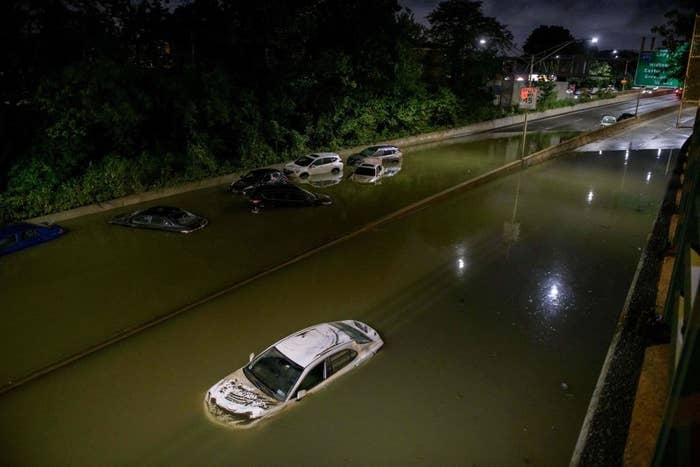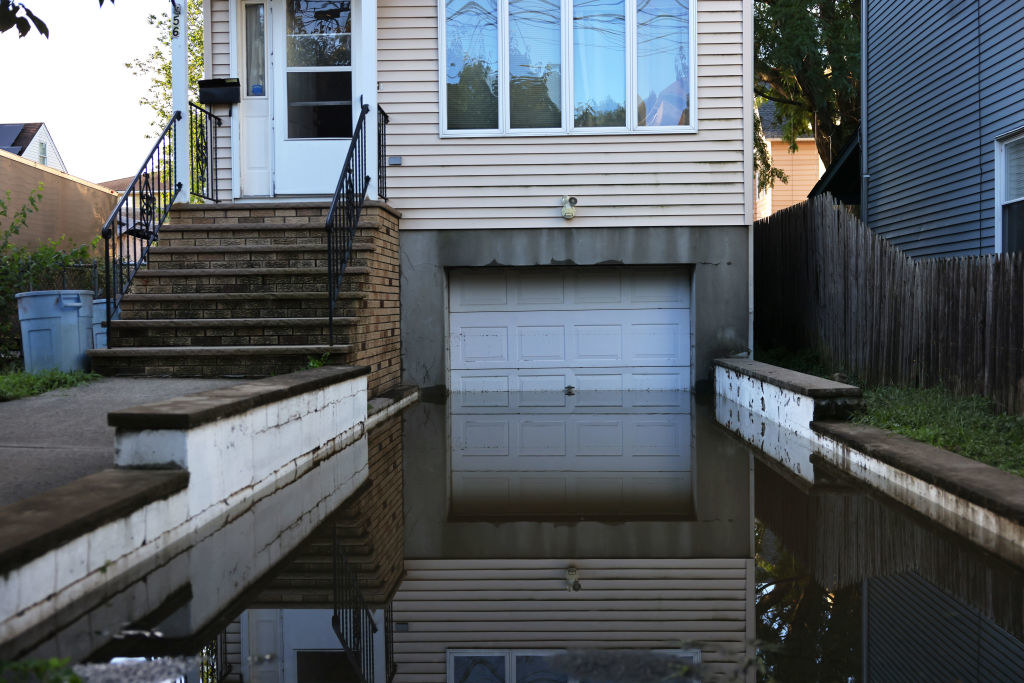
The remnants of Hurricane Ida pummeled the East Coast on Wednesday night with record-breaking rain and flash flooding, killing at least 45 people.
Eleven of them, including a toddler and an 86-year-old woman, reportedly drowned in New York City basement apartments in the worst flash flooding event the city has ever experienced. Another person died in a vehicle collision in Queens, and New York City Mayor Bill de Blasio confirmed a 13th death Thursday evening.
In Westchester County, New York, officials confirmed the deaths of at least three people there, including two men whose vehicles were submerged in water. In Harrison, police also sparked a search for a missing older couple whose car was later found pinned against a pole. Police said one body was found, dragged away by waters about a quarter-mile away from the car. The body was believed to be that of the missing man, and police are still searching for his spouse.
At least 23 people died in New Jersey, four of them drowning in an apartment complex in the town of Elizabeth. A majority of the deaths were people who were in cars that were overtaken by flooding, Gov. Phil Murphy said.
In Pennsylvania, three people died in connection to the storm in Montgomery County, including two drownings, County Commissioner Val Arkoosh said in a press conference. In Bucks County, one person was drowned inside a car.
In Connecticut, state police confirmed a trooper was swept away in a patrol car early Thursday morning by raging floodwaters. He was found hours later and taken to a hospital, where he died.
A 19-year-old man also died in flooding in Maryland.

"We are in a whole new world now,” de Blasio said on Thursday morning. He described the catastrophic storm as "unlike anything we’ve seen before."
Ida first made landfall in Louisiana as a Category 4 hurricane on Sunday, devastating coastal areas with flooding and 150 mph winds. Hundreds of thousands of homes, including many in New Orleans, remain without power, and authorities have said it may be weeks before electrical towers are repairs and grids restored.
But the severity of the storm as it moved north days later was unexpected, with residents given little warning.
"This was a 1 in a 100 years rainfall event," Steve Goldstein, National Oceanic and Atmospheric Administration liaison to FEMA, said in a press conference Thursday.
Videos of the New York City subway system show fires breaking out on the flooded tracks, waterfalls pouring over trains and through stations, and people wading through water attempting to get out.
Delivery drivers were captured in videos attempting to navigate through floodwaters on bikes in Brooklyn, and cars floated down expressways. A tornado also ripped through Mullica Hill, New Jersey.
These images in New Jersey are unbelievable! @News12NJ #StormWatch
A record-breaking 3.15 inches of rain fell in Central Park in one hour on Wednesday night, shattering the previous record that had been set just one week earlier, when the tail of Hurricane Henri hit New York with 1.94 inches.
“That says to me there are no cataclysmic unforeseeable events. We need to face these in advance and be prepared," New York Gov. Kathy Hochul said. "Because of climate change, unfortunately, this is something we’re going to have to deal with with great regularity.”
Heavier downpours are a consequence of climate change because warmer air can hold more water vapor, which eventually gets dumped as rain. The Northeast US has been particularly strongly affected by this trend. Not only has the total amount of rainfall there increased in recent decades, but individual rainstorms have delivered a more powerful punch.
“The recent dominant trend in precipitation throughout the Northeast has been towards increases in rainfall intensity, with recent increases in intensity exceeding those in other regions in the contiguous United States,” the National Climate Assessment noted in 2018.
Huge urban areas are especially vulnerable to flash flooding in outbreaks of heavy rain because paved surfaces make it hard for water to drain away. So when the remnants of Hurricane Ida passed through New York City and New Jersey last night, dropping historic amounts of rain in a short amount of time, major flooding was unavoidable.
Where the rain fell hardest: 24-hour estimated rainfall across the Northeast US, color palette spans 2 to 11 inches. Data source: https://t.co/jfJBcRZzxP Map: @paldhous
More than 100,000 people are without power across New Jersey and Pennsylvania, according to PowerOutage.us. Flights were diverted, and the Amtrak rail system is likely to be out for several days across parts of the Northeast.

Queens resident Deborah Torres lives in the apartment above where three people, including a 2-year-old boy, drowned Wednesday night. She told the AP her apartment was filled with water to her knees, and her neighbors below were unable to get out.
"The water pressure was so fast and strong, so I think they couldn’t open the door either way because this is like a pool,” Torres said. “I don’t know how that happened. It was so fast.”
The New York City flooding deaths occurred at five different apartments across Brooklyn and Queens.
“Imagine the horror of sitting in your own basement apartment, and the water just floods in all of a sudden with no notice, and you struggle to get out, but you can't," Senate Majority Leader Chuck Schumer said.
My new home in Albany, all Amtrak trains to New York City canceled for the day, probably a “couple days,” Amtrak worker says.
Schumer joined other New York officials in a press conference to speak on the need to improve infrastructure and be better prepared for life-changing weather events.
“This is the biggest wake-up call we could possibly get," de Blasio said. "We’re going to have to do a lot of things differently and quickly."


